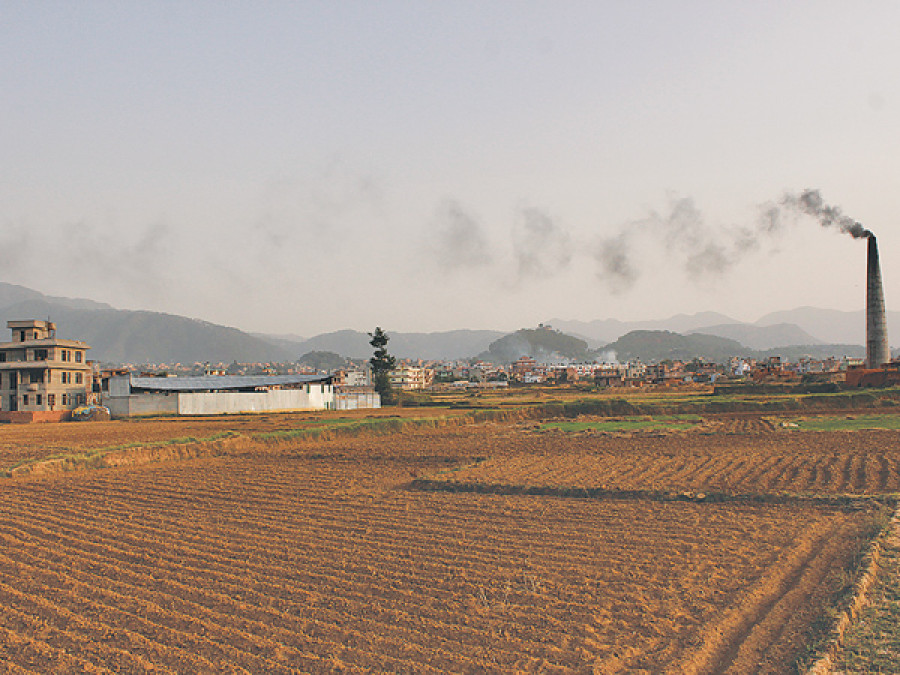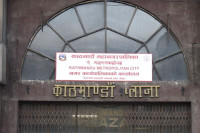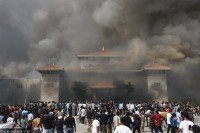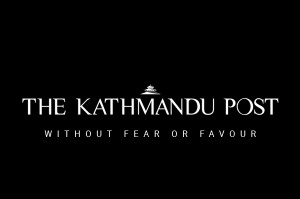Valley
Owners use green technology to rebuild quake-damaged brick kilns
Raj Kumar Lakehmar, a brick kiln owner at Tathali in Bhaktapur, was in a regular meeting with workers on April 25 when the earth started shaking violently.
Raj Kumar Lakehmar, a brick kiln owner at Tathali in Bhaktapur, was in a regular meeting with workers on April 25 when the earth started shaking violently. Within seconds, the chimney came crumbling down in front of his eyes.
The seasonal operation of the brick kiln was ongoing when the quake struck the nation and came as a big blow to owners of over 700 brick kilns, including around 100 in Kathmandu Valley alone.
“Luckily, no one was injured or killed at the kiln. However, it [earthquake] caused huge economic loss as the operation came to a grinding halt with the collapse of the chimney,” said Lakhemar, who started the business 12 years ago as an owner of Swet Bhairav Brick Kiln in Tathali near Nagarkot. The brick kiln, which was later damaged by the quake, was built with an investment of around Rs 10 million.
Despite destruction of the brick kiln that used to produce 70,000 bricks per day before the earthquake, Lakhemar saw an opportunity and decided to rebuild the brick kiln as one that is seismically stable and energy-efficient.
On Tuesday afternoon, Lakhemar was taking stock of the construction site where over 100 workers were building foundation and seismically-reinforced chimney structure for a new brick kiln that uses induced draught zig-zag technology. He said the construction started two weeks ago and will take around a month. Lakhemar is among a handful of brick owners in the Valley who are planning to rebuild their kilns with technical support from the International Centre for Integrated Mountain Development and in a safe and environment-friendly way to reduce the emissions of hazardous pollutants.
Though no specific study has been carried out in the recent years on contribution of brick kilns to Valley’s air pollution, around 30 percent of the pollution is estimated to be caused by brick kilns.
According to Bidya Banmali Pradhan, associate coordinator at Icimod’s Atmosphere Initiative, the design for the zigzag technology is such that it makes foundation with better insulation that makes heat sharing uniform among all bricks being heated. Likewise, this technology is expected to reduce coal consumption and emission by up to 30 percent. Besides these, the new foundation structure of the brick kiln is also being built in a seismically reinforced technology that makes the chimney stable enough to withstand an earthquake of 9 magnitude in future.
The April earthquake and its aftershocks damaged 108 of the total 111 brick kilns in the Valley. Most of them were built in traditional Bull Trench models that are inefficient, energy-intensive and polluting while very few of them used improved vertical shaft brick kiln that used less coal and emitted low smoke.
Lakhemar said though the cost of the new brick kiln is more than double, he sees his investment in right way. “I aim to produce 200,000 green bricks from the new brick kiln this season and at the same time contribute to reduce harmful emissions,” he said.




 19.12°C Kathmandu
19.12°C Kathmandu










